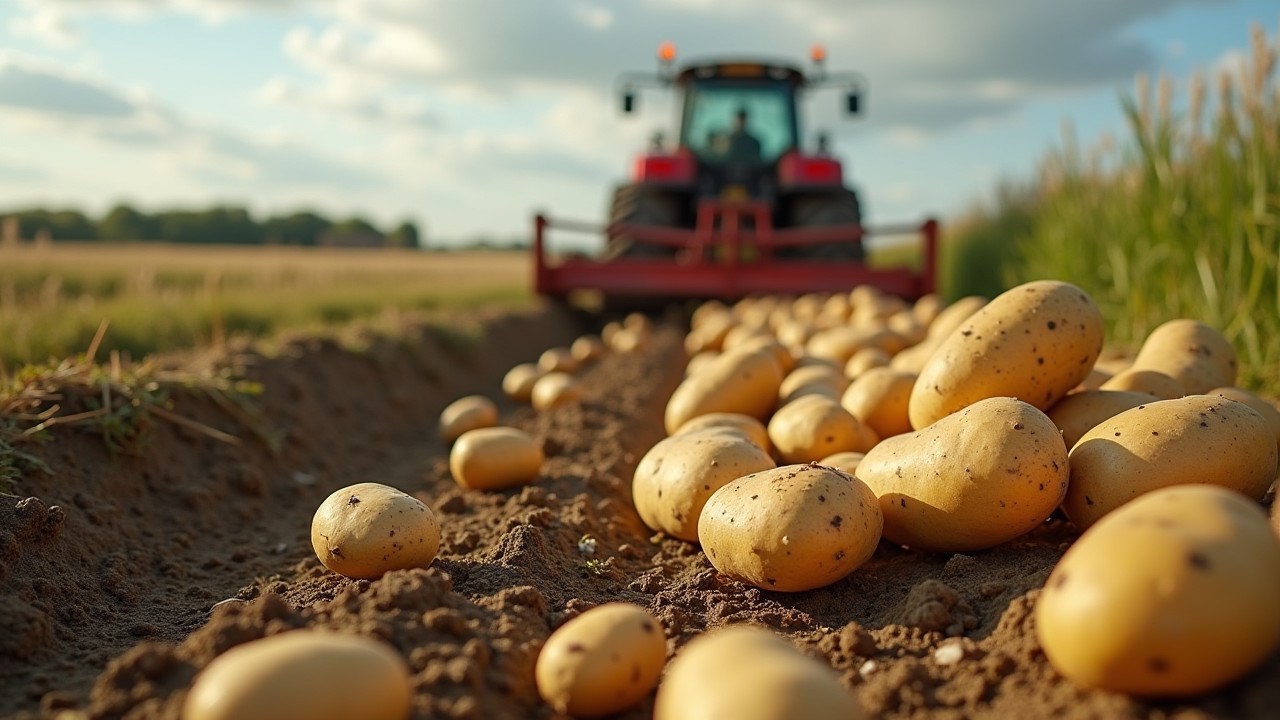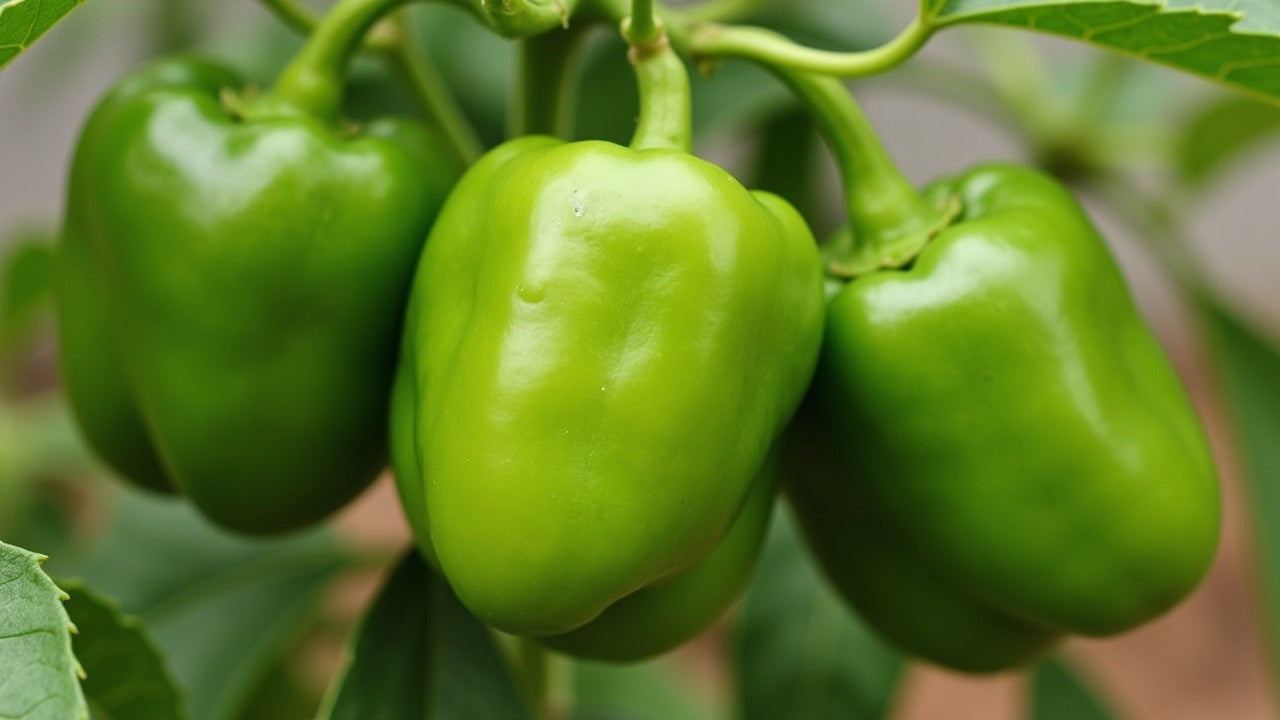Companion planting is a way to create a supportive environment in your garden. Through careful choice of companion plants for peppers, you can naturally dissuade pests, enhance soil health, and increase yields—particularly for peppers. If you have a large back garden, a small raised planter, or anything in between, learning about the best plants to grow with peppers will help you to produce healthier and tastier crops with less work. Let’s look at how to transform your patch into a flourishing ecosystem using companion plants for peppers.

The Best Companion Plants for Peppers
Selecting the companion plants for peppers is key to a successful growing season as these partner plants have a synergistic relationship with peppers which in turn benefits the health and production of the crop. Many different types of plants can serve as excellent pepper plant companions.
Herbs
Basil: A tried and true partner interplanting with peppers, basil deters aphids, spider mites, thrips, and flies; there is also the belief that it improves pepper flavor.
Parsley & Dill: These draw in beneficial insects such as parasitic wasps and hoverflies (which are predators of aphids) when allowed to flower. Dill may also be used as a trap crop for spider mites if managed carefully.
Marjoram & Oregano: Excellent for living mulches which help with weed suppression and water conservation, and in some cases aid in organic pest control peppers as ground cover.
Rosemary: Its powerful smell deters bean beetles, making them good pepper plant companions.
Chamomile: Referred to as a "plant doctor," it draws in useful insects and is also reported to invigorate nearby plants.
Vegetables
When you choose vegetables that do well with peppers, go for plants that have different growth requirements.
Carrots: Loosen soil and function as a living mulch while young, without heavy nutrient competition; meanwhile spacing out plants to allow for pepper root growth.
Onions & Garlic (Alliums): The pungent odor repels aphids, slugs, and certain beetle species. For this reason, they are great for border plants or mixed-in and excellent pepper plant companions.
Spinach & Lettuce: Provide ground cover, suppress weeds, and keep soil cool. Planting pepper under or between them for shade source in hot weather provides effective interplanting with peppers.
Bush Beans (avoid pole beans): Fixate nitrogen in the soil, which in turn benefits peppers, and repels Colorado potato beetles. They are beneficial vegetables that grow well with peppers, but ensure that they don’t shade young pepper plants.
Flowers
Flowers play a very important ecological role, which is why they are great companion plants for peppers.
Marigolds (Tagetes spp.): Known for suppressing soil nematodes and deterring aphids and other pests. Scatter them through the pepper patch for natural organic pest control.
Nasturtiums: Act as a trap for aphids and draw in pollinators and their edible flowers and leaves are a bonus. They make colorful pepper plant companions but watch for aphid growth.
Petunias: They can deter aphids, tomato hornworms, and asparagus beetles. It is suggested that planting them in containers nearby or mixing them in.
Geraniums (Pelargoniums): Repel Japanese beetles and cabbage worms by putting them in your garden or pots.
Plants to Avoid Near Peppers
Not all plants make good neighbors for your peppers. What you put away from your pepper plants is as important as the beneficial pepper plant companions you include.
Fennel: Inhibits the growth of most plant species, even that of pepper, due to allelopathic chemicals.
Kohlrabi: Thrives in a similar environment to peppers, which may cause their growth to be stunted. They can also be rivals for nutrition and may attract the same pests. Be very careful with small garden companion planting when considering Kohlrabi near peppers.
Apricot Trees: Can carry a fungal disease that affects peppers.
Walnut Trees: Produce juglone, a chemical that is toxic to peppers and other nightshades.
Potatoes: These relatives often share the same pests and diseases (e.g., blight, aphids), so growing them near your peppers is a risk for both crops.

Tips for Companion Planting in Small Spaces
Even with limited room, small garden companion planting techniques can maximize your harvest.
Container Gardening with Companions: Choose appropriately sized pots for peppers and their companions (e.g., peppers with basil and marigolds in one large pot).
Vertical Gardening Strategies: Utilize trellises for vining companions (like some beans or nasturtiums) if peppers are staked, or use stackable planters.
Interplanting with Peppers Effectively: This practice involves growing quick-maturing, shallow-rooted companions (lettuce, radishes) between pepper plants to maximize space and resources. Successful interplanting with peppers requires careful selection of compatible species.
Raised Bed Garden Peppers and Companions: Plan layouts that incorporate diverse pepper plant companions within the raised bed garden peppers setup, ensuring adequate spacing for airflow and sunlight. This controlled environment is ideal for testing various combinations, including specific methods for interplanting with peppers.
Succession Planting: Use companions to fill gaps as other plants are harvested, maintaining continuous ground cover and productivity.
Bonus: Yield Boosting Benefits
The advantages of good companion planting go far beyond simply having a prettier garden. The strategic use of companion plants for peppers offers tangible benefits such as enhanced crop yields.
Improved Pollination: While most peppers are self-pollinating, buzz pollination by bees can improve fruit set and size. Flowers like borage and sunflowers can draw in pollinators, increasing the chances of successful pepper flower pollination.
Soil Health and Nutrient Cycling: Legumes (bush beans) are perfect vegetables that grow well with peppers that improve nitrogen content. And groundcovers (low-growing herbs, lettuce) reduce soil erosion and conserve moisture.
Creating Favorable Microclimates: Tall pepper plant companions are great for providing some shade in very hot weather, while groundcovers cool root zones.
Wrap-Up
Harnessing the power of nature through companion planting is a wise and rewarding strategy for any gardener aiming for a healthier, more bountiful pepper harvest. The key takeaways are clear: thoughtful plant partnerships lead to significant pest reduction, noticeable yield increases, and a more balanced and resilient garden environment.
We encourage you to experiment with different pepper plant companions in your own garden. Observe what combinations work best in your specific climate and soil conditions, and whether you're tending to raised bed garden peppers or container gardens. The world of companion planting is vast and fascinating, and the best teacher is often direct experience.

Boost your greenhouse gardening skills! Join our VIP Gardening Group to exchange tips, tricks, and personal gardening journeys. Click here to learn more and connect with fellow enthusiasts!








